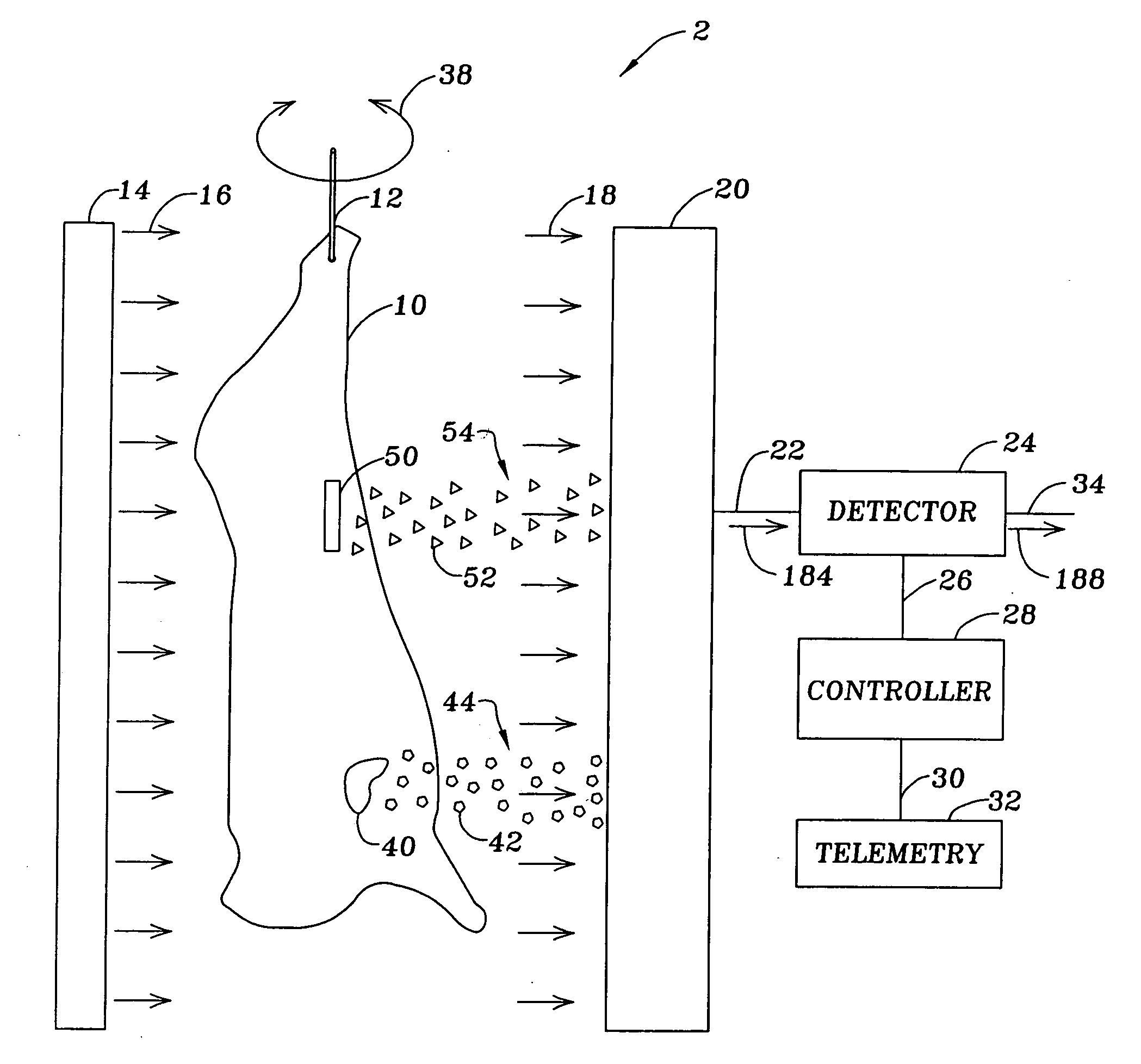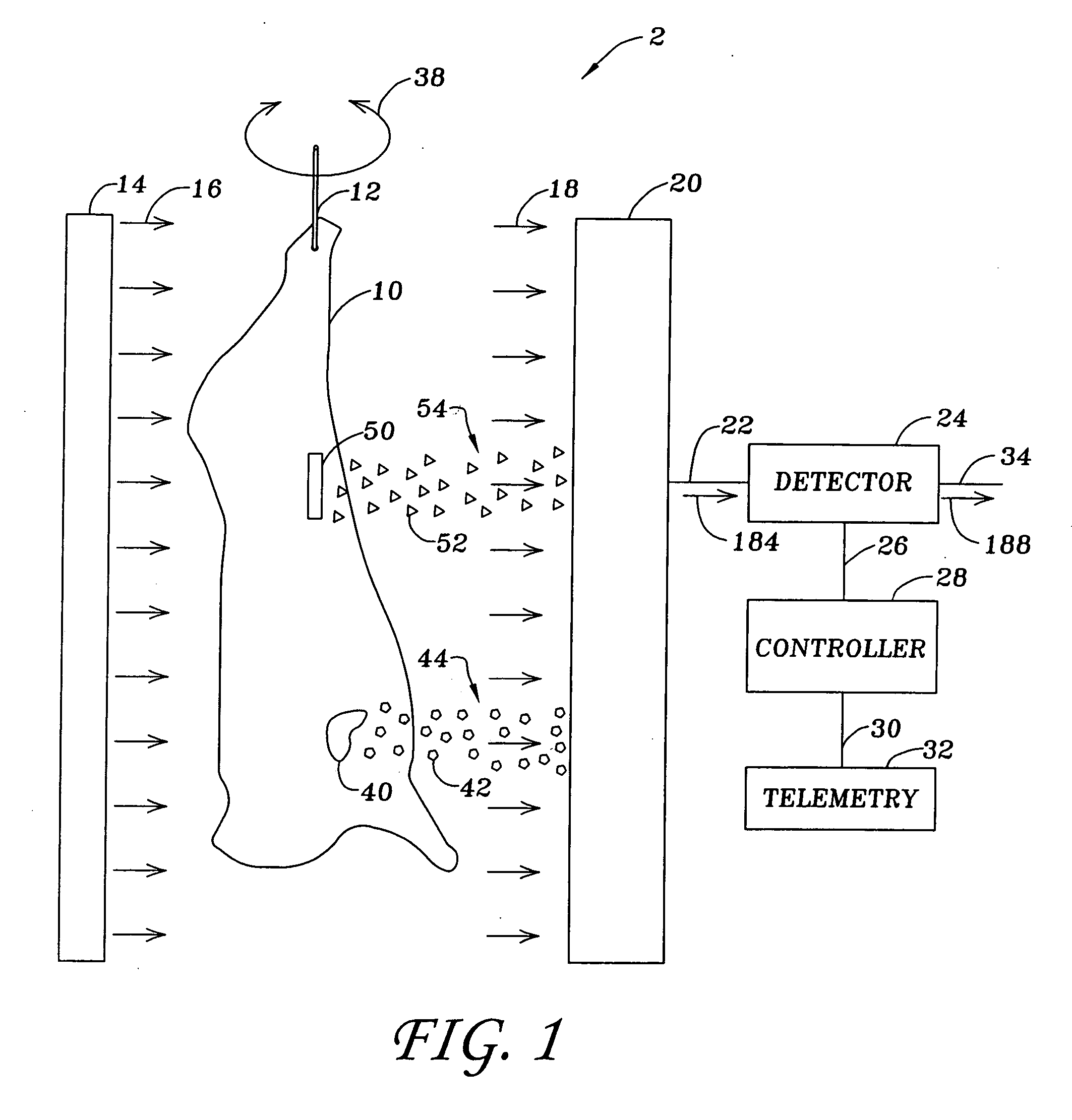Apparatus and method of contaminant detection for food industry
a technology of contaminant detection and apparatus, applied in the field of detection of contaminants, can solve the problems of companies going out of business, affecting the quality of food products,
- Summary
- Abstract
- Description
- Claims
- Application Information
AI Technical Summary
Benefits of technology
Problems solved by technology
Method used
Image
Examples
Embodiment Construction
[0030] The present invention comprises a novel detection apparatus and method for detection of contaminants in and on food products. More particularly, it involves use of a contaminant detector utilizing an aerosol lab-on-a-chip (ALOC) device or electronic nose device to chemically detect contaminants on food products by sampling the air surrounding the products.
[0031] For the purposes of this disclosure the following definitions shall apply:
[0032] Aerosol lab-on-a-chip (ALOC) is a device which integrates one or more of a variety of aerosol collection, classification, concentration (enrichment), and characterization processes onto a single substrate or layered stack of substrates;
[0033] Contaminants are materials found in or on food products which are foreign to the product itself and may include, but are not limited to, chemicals, fecal material, dirt and other detritus, microbes, viruses, fungi and protozoa;
[0034] Electronic noses are devices which are used for automated detec...
PUM
 Login to View More
Login to View More Abstract
Description
Claims
Application Information
 Login to View More
Login to View More - R&D
- Intellectual Property
- Life Sciences
- Materials
- Tech Scout
- Unparalleled Data Quality
- Higher Quality Content
- 60% Fewer Hallucinations
Browse by: Latest US Patents, China's latest patents, Technical Efficacy Thesaurus, Application Domain, Technology Topic, Popular Technical Reports.
© 2025 PatSnap. All rights reserved.Legal|Privacy policy|Modern Slavery Act Transparency Statement|Sitemap|About US| Contact US: help@patsnap.com



